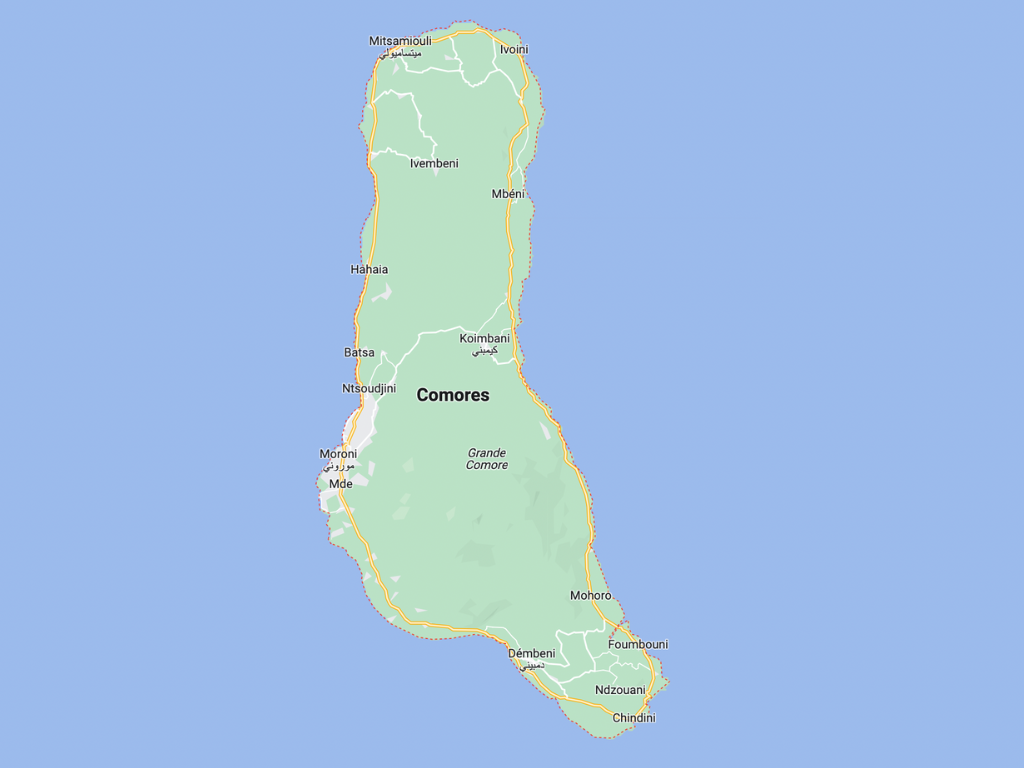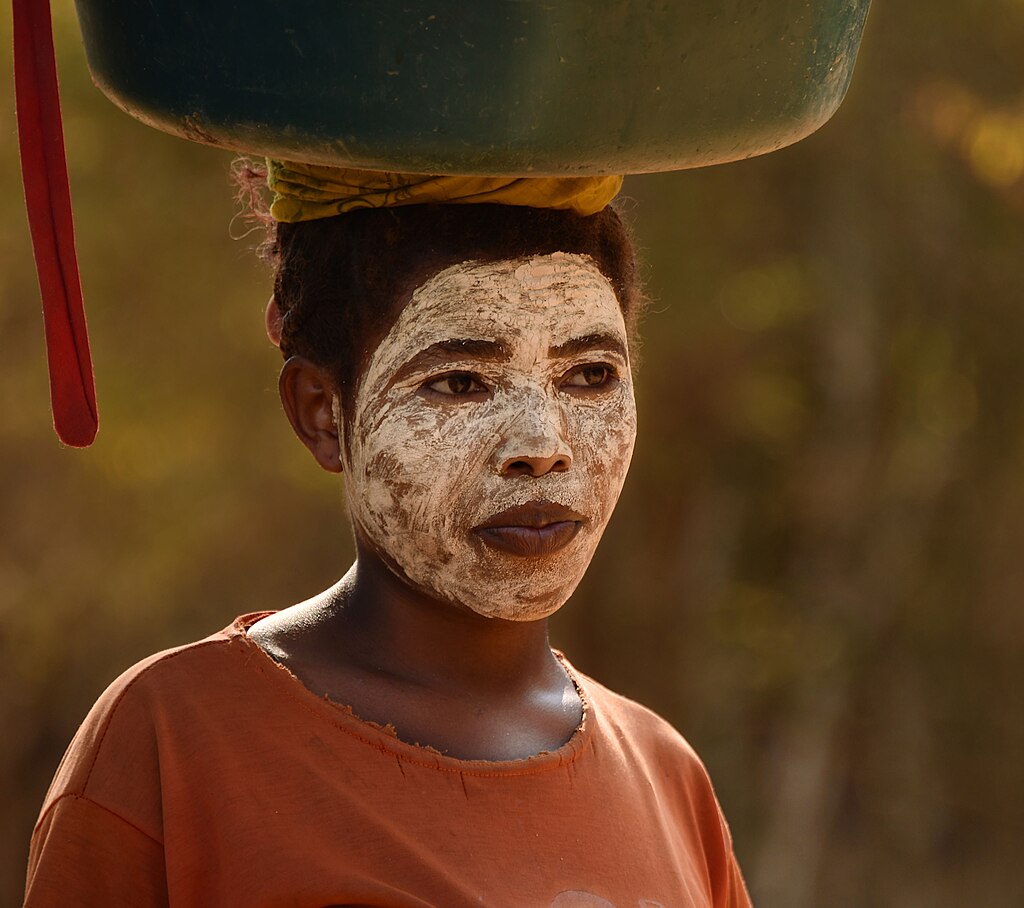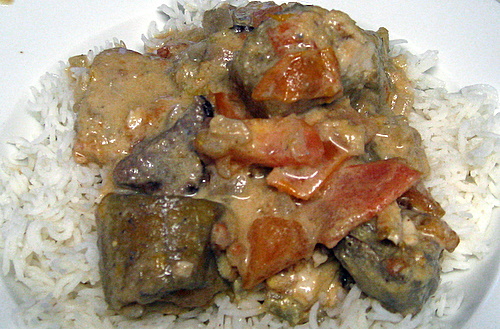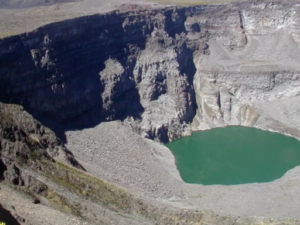INDIAN OCEAN TRAVEL by TOURISMER
INDIAN OCEAN TRAVEL by TOURISMER

Responsible travel Comoros
This archipelago, also called "the islands of the moon" located in the Mozambique Channel, is not really a tourist destination. Few curious people come to visit the Comoros. And yet, the archipelago is not devoid of charm and authenticity. Deserted beaches, luxuriant nature, rich and varied aquatic fauna. The different islets are bathed in an authentic atmosphere, with the richest fauna and flora.


The Comoros have nothing to envy to the islands of the whole world. Their tourist potential, which combines its culture, history, exceptional nature and seabed, traditional gastronomy, legendary hospitality and diversified craftsmanship, makes their heritage a complete tourist heritage.
Good political will, involvement and ownership by everyone are the key words for the development of this sector.
We are supporting

The VIIIse and IXe centuries see the first human settlements. It seems that the first inhabitants already belong to the first Swahili peoples, characterized by a culture of Bantu origin. The maritime trade, very active from this time, attests to the contacts with the Muslim Middle East, in particular Persia, then Oman.
In the XIIIe and XVe centuries, the archipelago was structured under the direction of Muslim leaders, the Fani. Cultural contacts with the Swahili coast and Madagascar are important.
Around 1470, Shirazi sultanates (originating in Persia) gradually settled on the islands, recognized until the beginning of the 19th centurye century. It is from this period that dates the establishment of Sunni Shafi'i Islam still practiced in the archipelago.
Modern era
In 1453, the fall of Constantinople brutally closed the trade routes that linked Europe to the East. Then began the golden age of maritime trade, which circumvented Africa to reach India and China: the Mozambique Channel suddenly found itself at the heart of the main trade route in the world, resulting in an important period prosperity for the many islands and city-states of the Swahili cultural area.
It is from the beginning of the XVIe century that date the first direct relations with the peoples of Europe.

Les XVIIe and XVIIIe centuries were a particularly prosperous period for the Comoros, ideally placed on a thriving trade route between Europe and what became the Omani Empire.
On April 25, 1841, Sultan Andriantsoly sold Mayotte to France in exchange for a lifetime annuity and permission to raise his children in Reunion at the expense of France.

On this date, Louis-Philippe Ist, then king of the French, officially integrates Mayotte into France.
In 1869, the opening of the Suez Canal marked the end of the route to India via the Mozambique Channel: within a few decades, the thousands of merchant ships that called at the Comoros each year diverted to Egypt. , and the financial windfall represented by port activity suddenly disappeared, plunging the ports of the region into misery.
France undertook to establish a protectorate in the Comoros, ratified by the Sultan of Grande Comore in 1886. From 1892, power over the islands of the Comoros was exercised by the Residents subordinated to the governors of Mayotte (therefore under the authority of the President of the French Republic), who, little by little, took power and abolished slavery The official language became French, education changed from Arabic to French . However, the use of Kiswahili dialects continues in the business world.

In 1904, the official legal attachment is made between the islands. It was followed, on July 25, 1912, by a second decree officially linking "Mayotte and its dependencies" to Madagascar.
Faced with the French refusal to recognize the island of Mayotte as Comorian territory, the President of the Council of the Comoros, Ahmed Abdallah Abderamane, unilaterally proclaimed the independence of the entire archipelago on July 6, 1975.
The Federal Islamic Republic of the Comoros (RFIC) is the second republic of the independent state formed from the islands of Grande Comore, Anjouan and Moheli.

Established following the coup of May 13, 1978, replacing the Comorian State (1975-1978), it was replaced in 2001 by the Union of the Comoros.
The languages mainly used are the languages of the group comorian (or shikomori) and French. In addition, there are people speaking Malagasy, Arabic, Kiswahili, Gujarati dialect such as Katchi.
98% of the population are Sunni Muslims.
Catholics, Jehovah's Witnesses and Protestants represent 2% of the population.
Comorian culture is historically a southern subdivision of the important Swahili culture, an African cultural ensemble of Bantu origin, Indian and Arab-Muslim influence, present on the entire East African coast and part of the Indian Ocean islands. western (region formerly called « Zanguebar »), and whose main historical political unit was XIXe century the great Sultanate of Muscat and Oman (which would become the Sultanate of Zanzibar at the XIXe century.
Clothings
Arab, African and Indian influences can be found in traditional clothing: lesso, chiromania (shawl), kändou, kofia (cap for men).

Very attached to their lineage, each respects the characteristic colors that their village has. The differences in costumes are especially notable for those of women. The color of a woman's scarf (chiromani in shikomori) indicates, the island of origin of this woman. The details of the clothing indicate the level in the customary hierarchy (single, grand marriage, hajj, etc.) One of the most original pieces of men's suits is the "Kofia with a hole", on which words from the Koran are often sewn.
Women have the custom of adorning themselves with Msindanu, the sandalwood beauty mask.

Dance
Traditional dances, sambe, shigoma, biyaya, igwadou.
(The Biyaya is a mixed and circular dance practiced in the islands of the Comoros archipelago)
Music
The twarab initially corresponded to concerts and competitions of Arab violins, which gradually also associated Indian influences.

Handicrafts
Especially remarkable: silver jewelry, basketry objects, raffia hats, embroidered linen, carved wood.
The cuisine of the Comoros, influenced by Indian, Malagasy, Arabic and African cuisines, uses a base of rice, cassava, green bananas with seafood, coconut as a base for sauces. The rice dishes are garnished with meat or fish, flavored with local spices: vanilla, coriander, cinnamon, cardamom and cloves.
Some emblematic dishes:
MTsolola
A stew consisting of fish and meat cooked in coconut milk, beef, mahi-mahi, oil, tomatoes, onions and seasonings.

Vanilla Lobster
Lobster with vanilla is considered the national dish of the Comoros, prepared with lobsters, vanilla pods, butter, olive oil, shallots, white wine, vinegar, Vidalia onions, sprouts clover and spinach.


In the capital, Moroni, carved doors and a colonnaded white mosque, the Old Friday Mosque, are dotted around the port and medina, bearing witness to the islands' Arab past.
To see in the city: the Badjanani district and its many mosques, the national museum retracing the history of the Comoros, the medina and its many bazaars, as well as the Small Market and its Indian jewelry stores.
 The Saloi Distillery was created in 2015. It is part of the continuity of Anjouan family traditions and wishes to participate in the economic development of the island while protecting it.
The Saloi Distillery was created in 2015. It is part of the continuity of Anjouan family traditions and wishes to participate in the economic development of the island while protecting it.
Its objective is to create a very high quality essential oil by combining sustainable development techniques with the management of natural resources (rivers and forests). It is a question of respecting the local know-how by providing solutions adapted to the current world in order to highlight the crossing of skills and a real integration into the industry of the island.
 The Earth Sciences Laboratory of the University of La Réunion, in collaboration with the Volcanological Observatory of Karthala, set up scientific missions to understand the functioning of this volcano and to prevent eruptions.
The Earth Sciences Laboratory of the University of La Réunion, in collaboration with the Volcanological Observatory of Karthala, set up scientific missions to understand the functioning of this volcano and to prevent eruptions.
Athletes can embark on the ascent of the Karthala Volcano, the largest active crater in the world. With the help of a guide, the proposed hikes can lead you to the summit, to 2,361 meters altitude. From this highest point of the archipelago, enjoy an idyllic panorama. Count around 5 to 6 hours of walking, with the possibility of sleeping in a bivouac.
The village marine reserve Nioumadioua, south of theisland of Moheli. Whales, dolphins, rays, giant sea turtles, so many protected species that inhabit the seabed of this breathtaking place.

Insidethe small fishing village of Itsamia, the surrounding beaches are a favorite haunt for green sea turtles. They would be 2 500 coming to lay their eggs on the island each year. The poaching rate being unfortunately high, the inhabitants and the ADSEI association (Association for the Economic Development of Itsamia) have been mobilizing since 1991 to ensure their protection. Visits organized and supervised by volunteers are offered to visitors, with accommodation options.
 Nioumadioua marine reserve
Nioumadioua marine reserveThe village marine reserve Nioumadioua, south of theisland of Moheli contains in abundance: whales, dolphins, rays, giant sea turtles.
Accessible by boat from the village, the reserve extends over several islets, where you can dive or simply swim with a mask and snorkel. To see the whales, visit from June to October, when they migrate through the warm waters of the Indian Ocean.
 Reaching an altitude of 1,338m, Ntingui Mountain Peak is the second highest peak on the island. Take a hike to get there and you will see an abundance of interesting plants and animals on your way. When you get to the top, take a moment to appreciate the breathtaking view of the landscape and the pristine nature.
Reaching an altitude of 1,338m, Ntingui Mountain Peak is the second highest peak on the island. Take a hike to get there and you will see an abundance of interesting plants and animals on your way. When you get to the top, take a moment to appreciate the breathtaking view of the landscape and the pristine nature.
Possibility of car rental. Driving is dangerous due to the poor state of road infrastructure and vehicles. Compliance with the highway code is approximate. The greatest caution is indicated, particularly at night, given the relatively high frequency of accidents and their generally serious or fatal nature.
Several companies organize flights to the Comoros: Air Madagascar, Comores Aviation, Kenya Airways, African Airways, Air Austral and Yemenia Airways.
Various boats connect the islands together, including Mayotte. Not all boats are up to safety standards. In particular, it is strongly advised not to board crowded ferries, as several inter-island ferries have already capsized, costing the lives of dozens of people.
There is no bus network or railway network. You can get around by taxi or collective taxi.
Find more updated information on Tourism in Comoros in our Blog Tourismer.io

Extensive traditional cropping systems are no longer compatible with growing demographic pressure and the effects of climate change. Degraded lands are losing their fertility and water is becoming increasingly scarce for agricultural production. With a view to intensifying and increasing productivity, chemical phytosanitary substances are increasingly used, particularly for market gardening. Export crops such as ylang ylang and cloves are often grown in monoculture, reducing the areas reserved for the cultivation of basic agri-food products. Thus, a vicious circle has set in where the degradation of natural resources progresses in parallel with a drop in agricultural yields.
It is in this context that the Rural Development section tries to strengthen agricultural productivity and the resilience of farmers. We seek to promote and develop more productive innovative agroecological technologies that act as an economic engine for the regeneration of Comorian terrestrial and marine ecosystems.